Slide 1
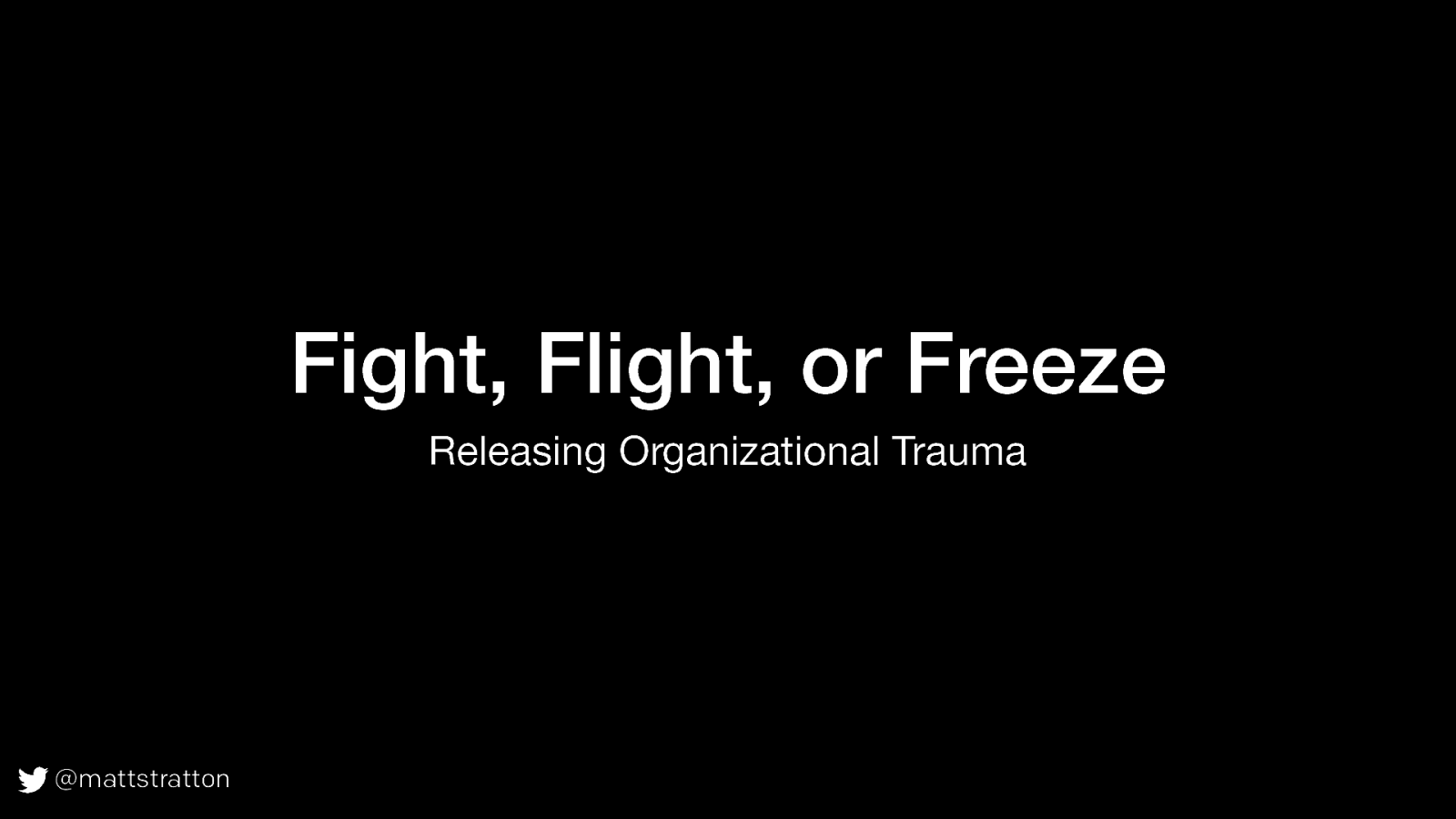
Slide 2
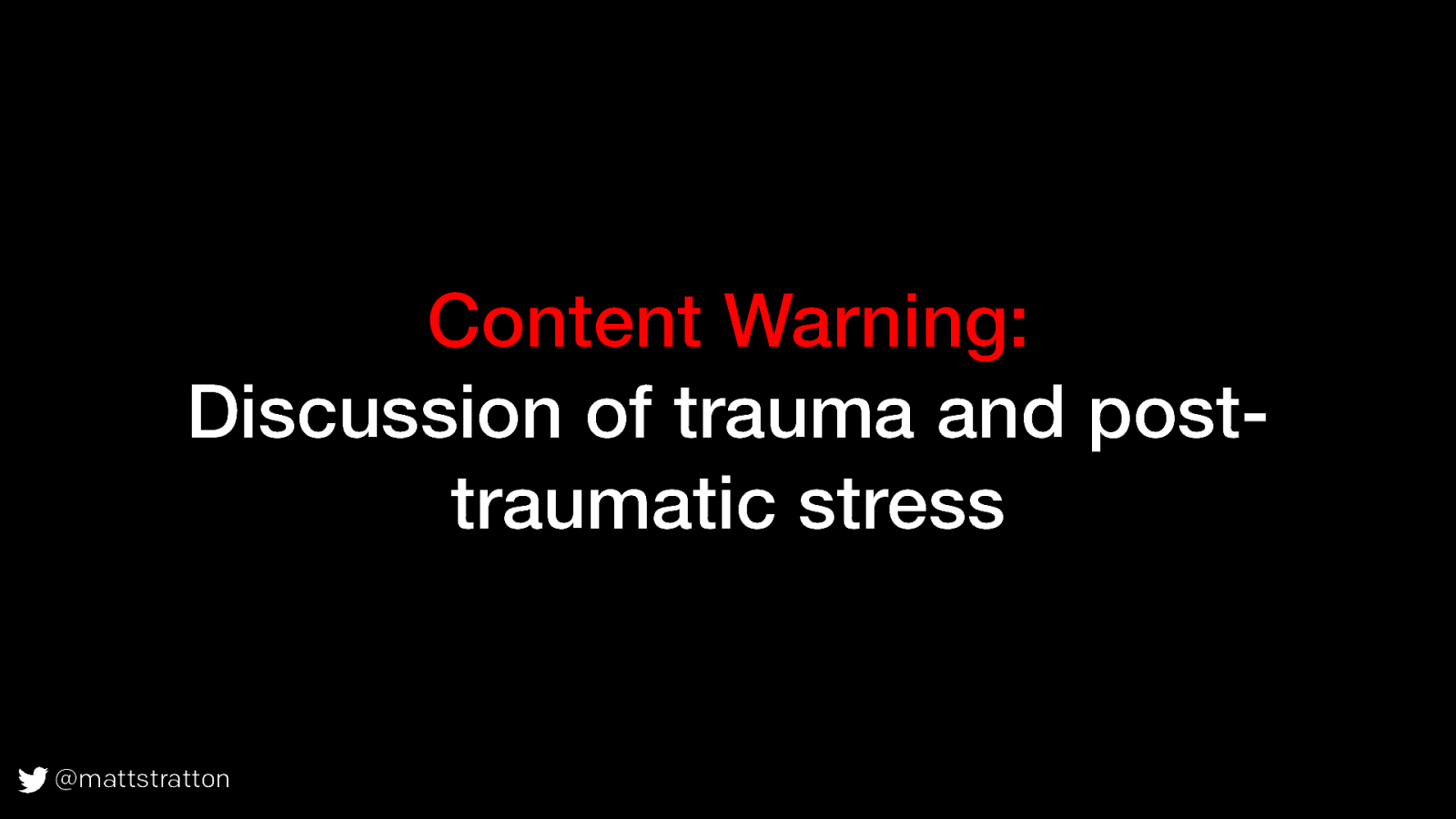
Slide 3
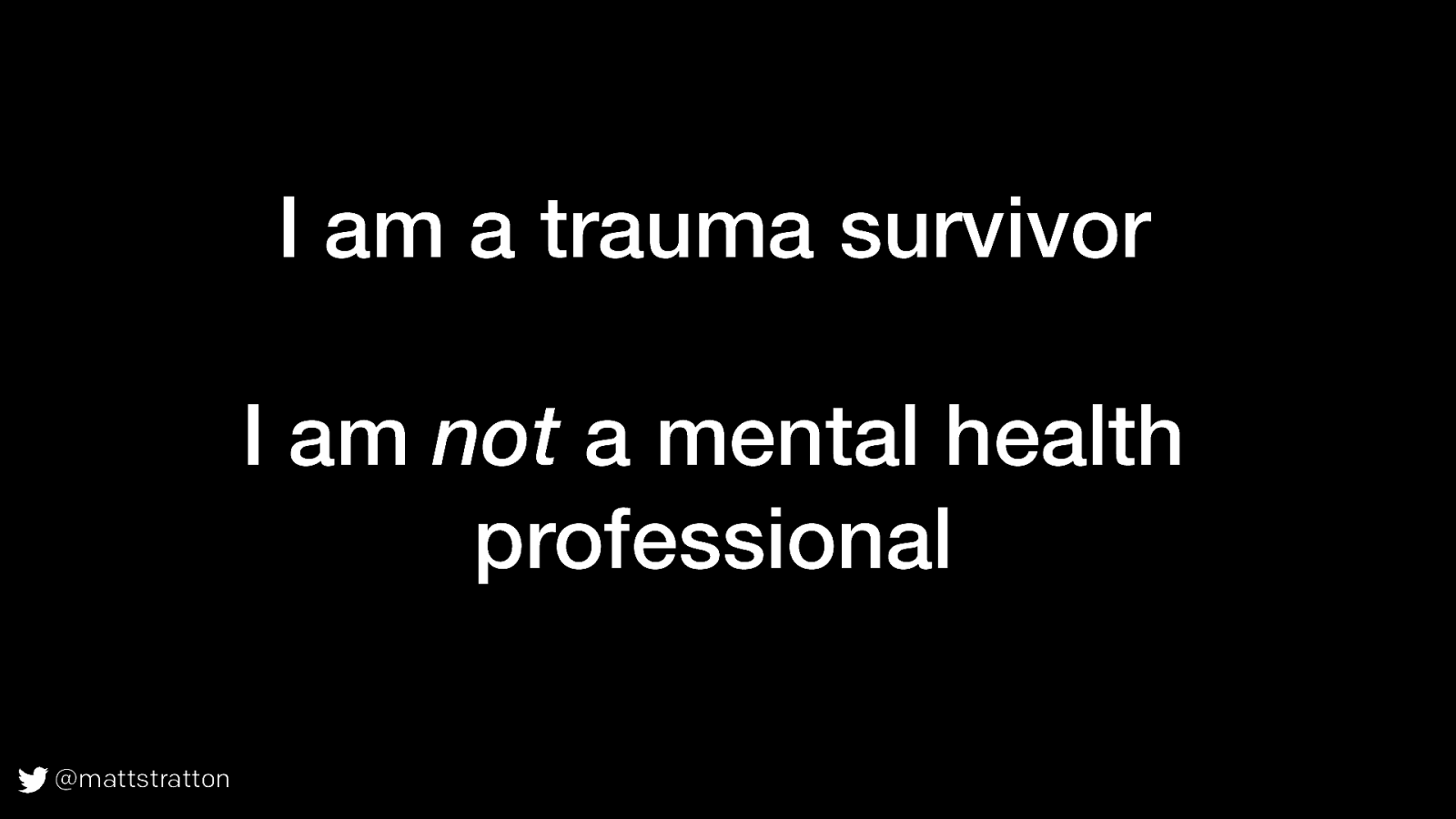
Slide 4
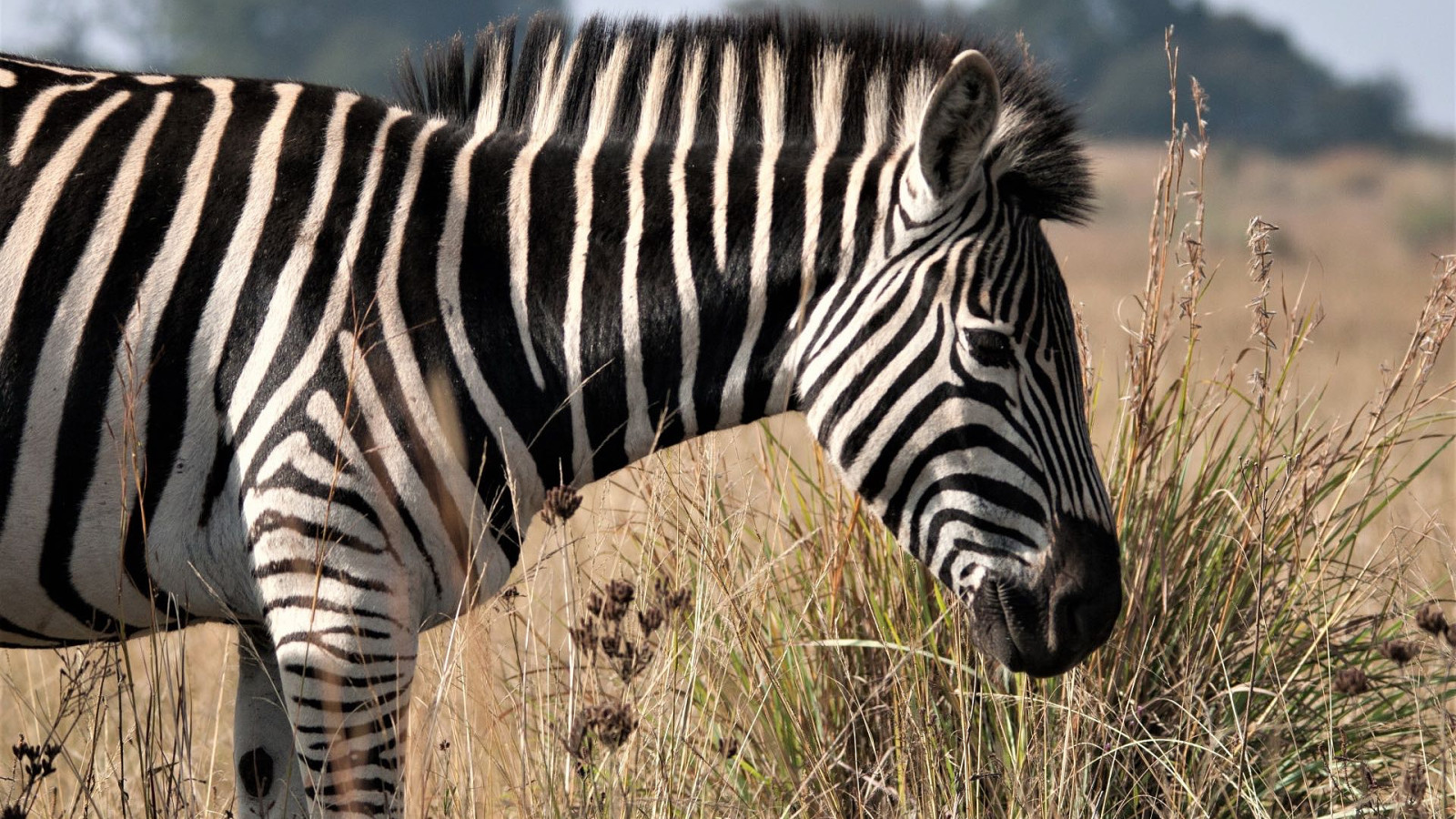
A zebra at rest with no threat of predators, for instance, will be operating within the “rest and digest” functions of the parasympathetic nervous system.
When chased by a lion, drastic physiological changes with the activation of the fight-or-flight response of the sympathetic nervous system : heart rate increases, breathing increases, large amounts of stress hormones like cortisol and adrenaline are released into the bloodstream, pupils dilate, blood pressure increases and any non-essential functions like digestion stop. The zebra’s nervous system prepares it to run for its life. If the zebra is caught, the nervous system is overwhelmed, and has no further solutions - this is the freeze response. This point is what we consider trauma.
Zebra that survives the encounter literally “shakes it off” and returns to a resting state.
Slide 5
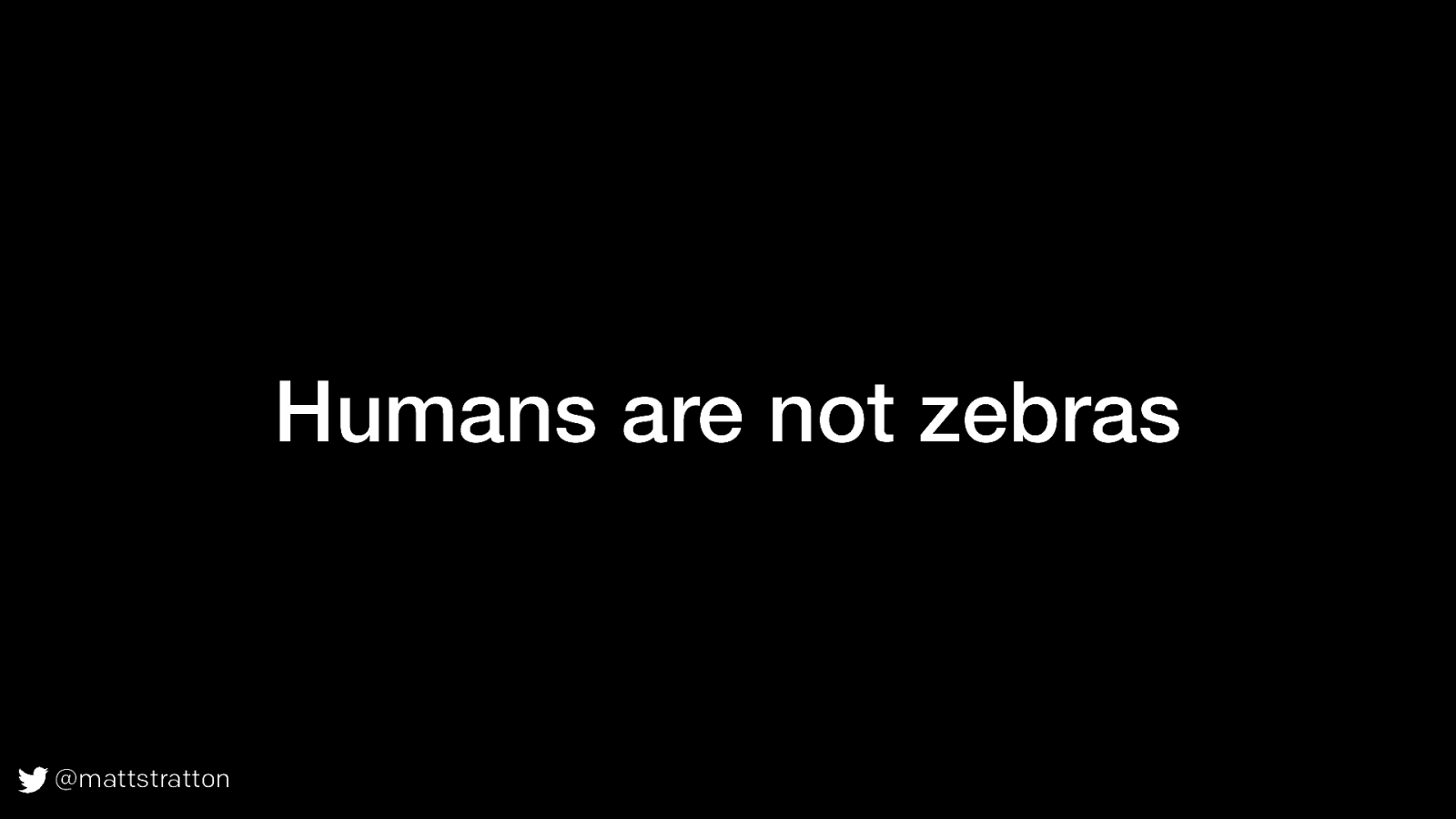
The autonomic nervous system is common to all mammals. However, humans have a pre-frontal cortex, which zebras do not. This is usually an advantage, but the disadvantage is that we mentally replay traumatic scenarios, which activates our sympathetic nervous system exactly like the real threat would.
Slide 6
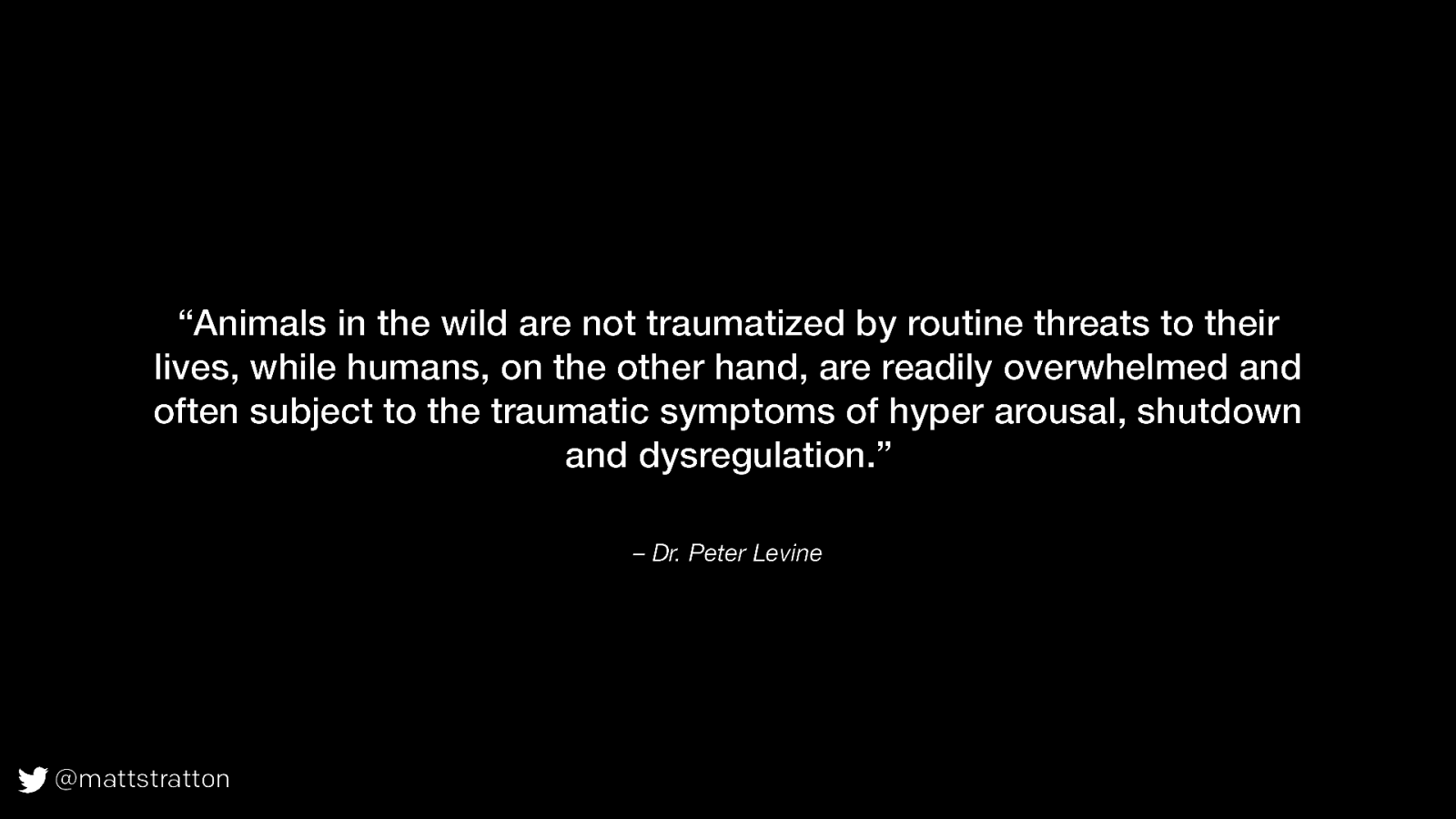
Slide 7
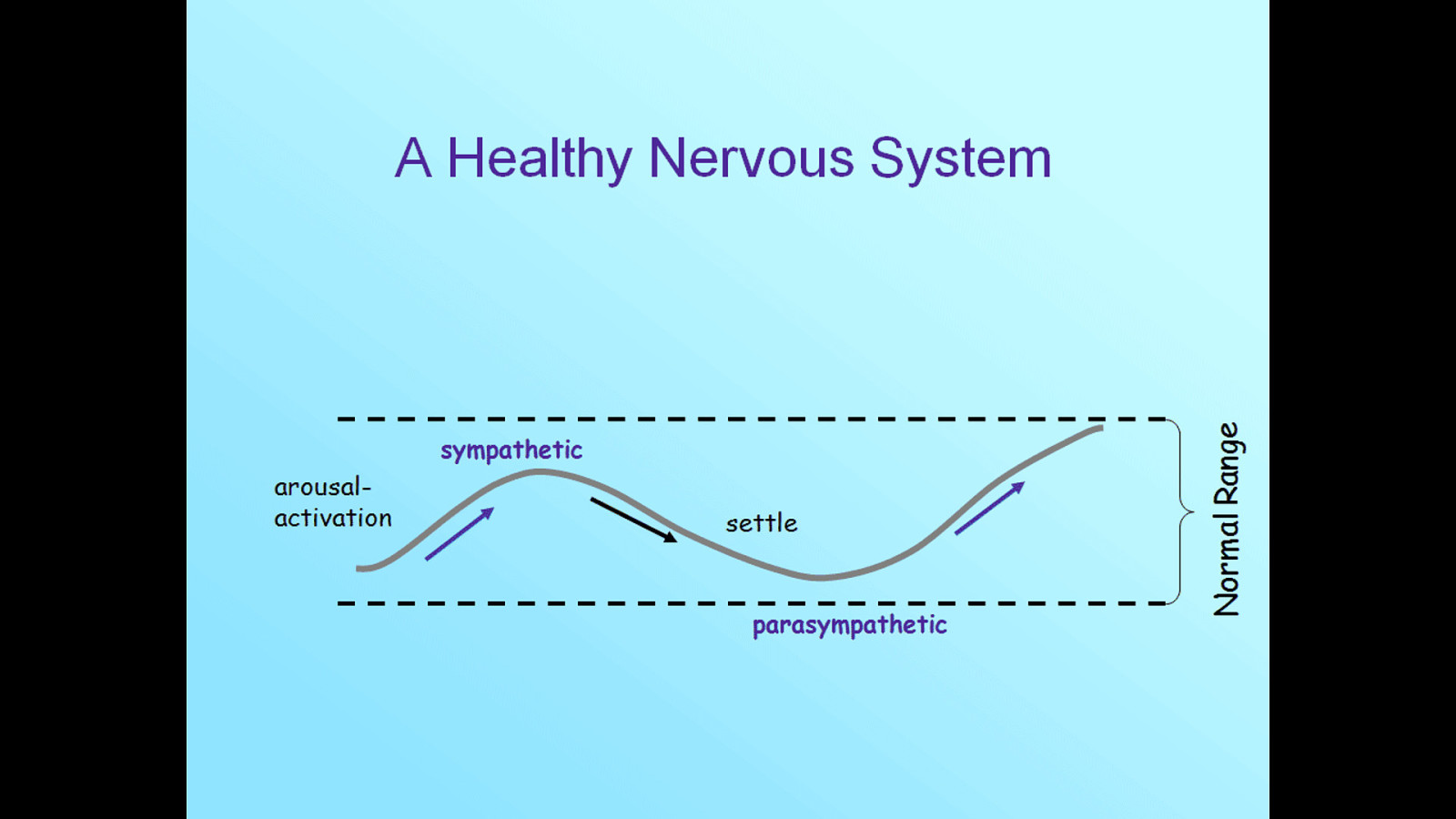
The window of tolerance refers to a zone of "emotional arousal that is optimal for well-being and effective functioning," (Siegel, 1999)
Slide 8
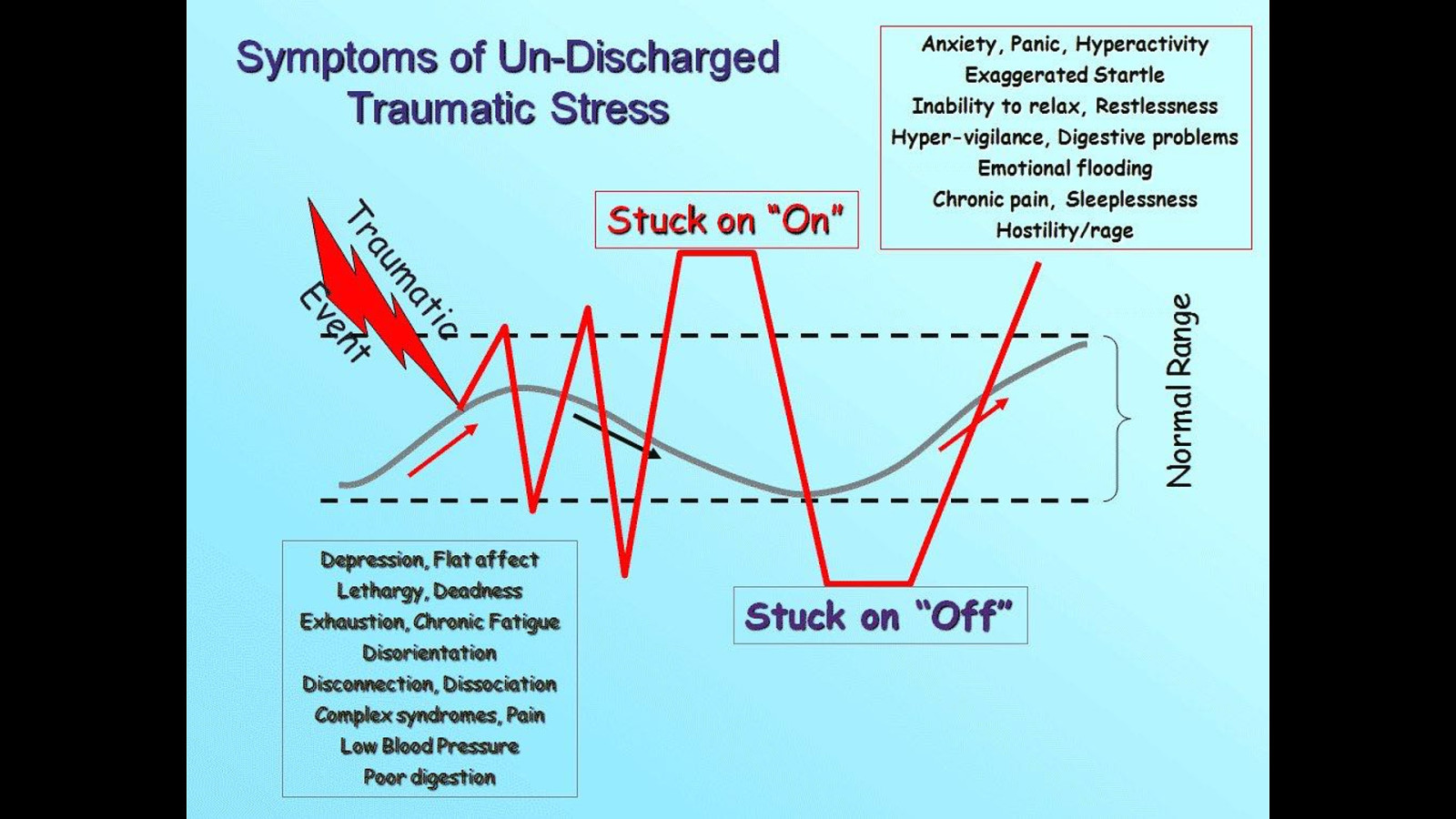
Hyperarousal is similar to the "fight or flight" response. hypoarousal is similar to the "freeze" response
Slide 9
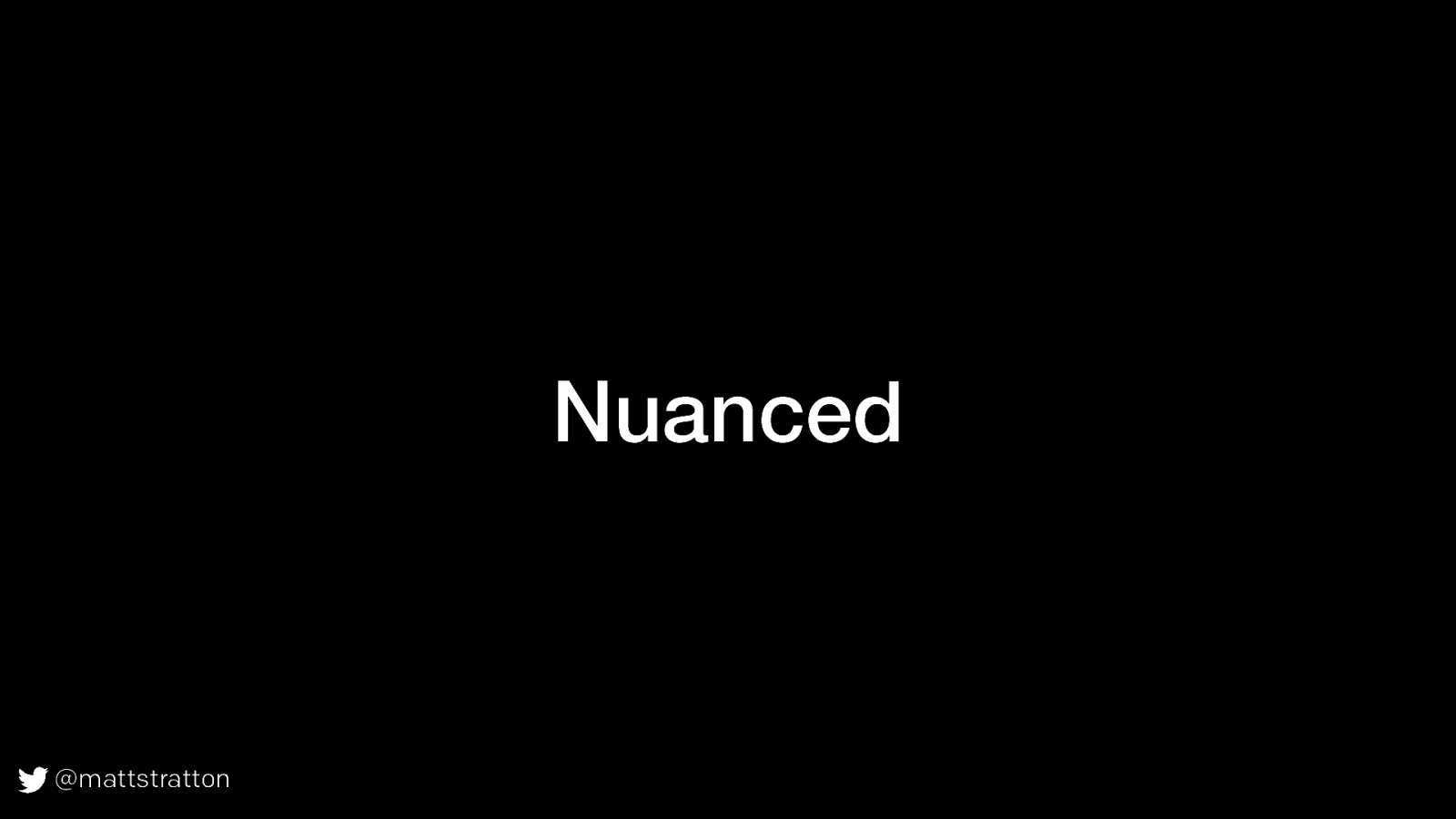
Trauma isn’t simple
Slide 10
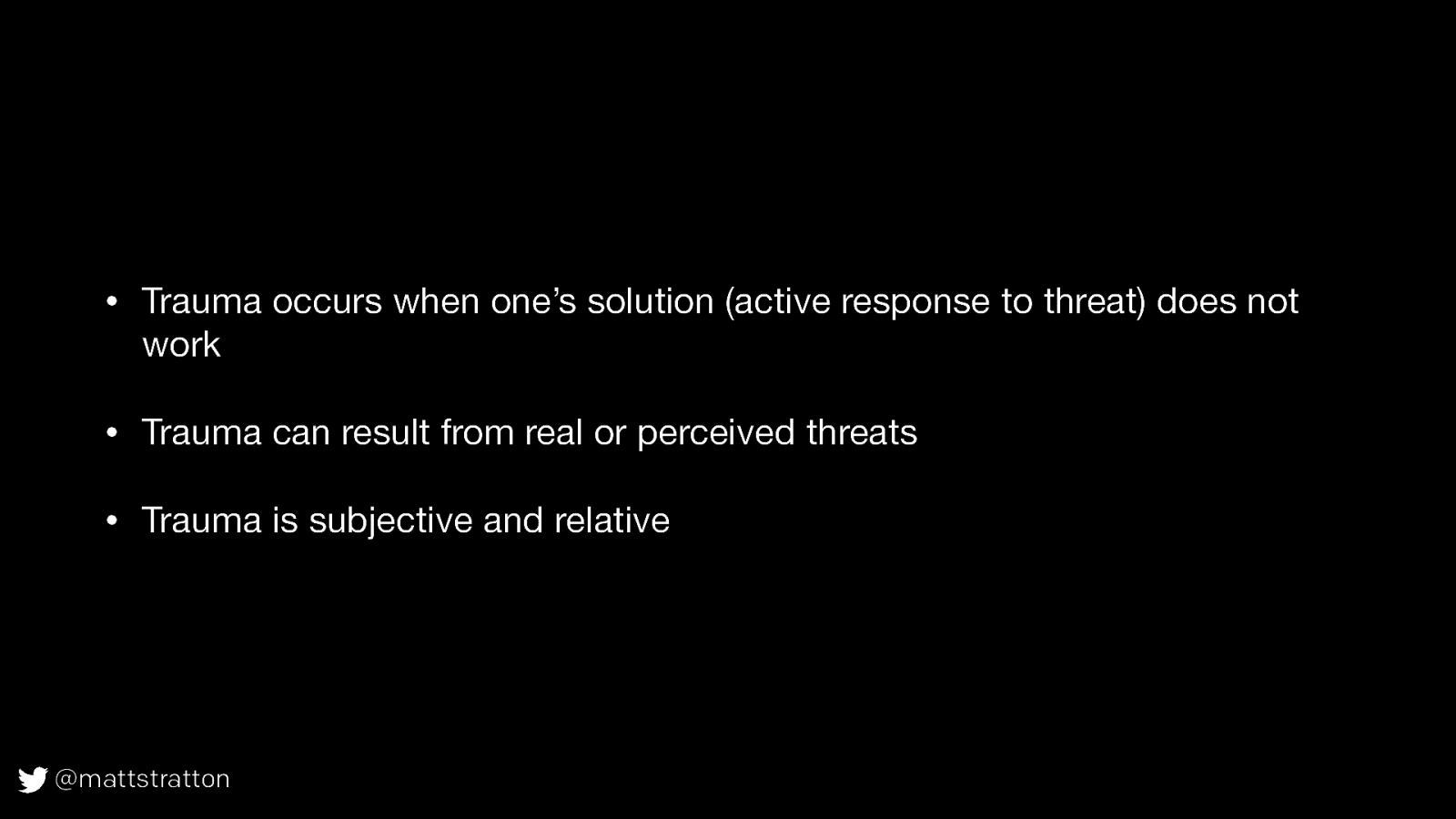
- The nervous system has been overwhelmed
- Nervous system activation is the same for real and imagined threats
- What I perceive as overwhelming, or my capacity for a solution, may be different than what you perceive as overwhelming
Slide 11
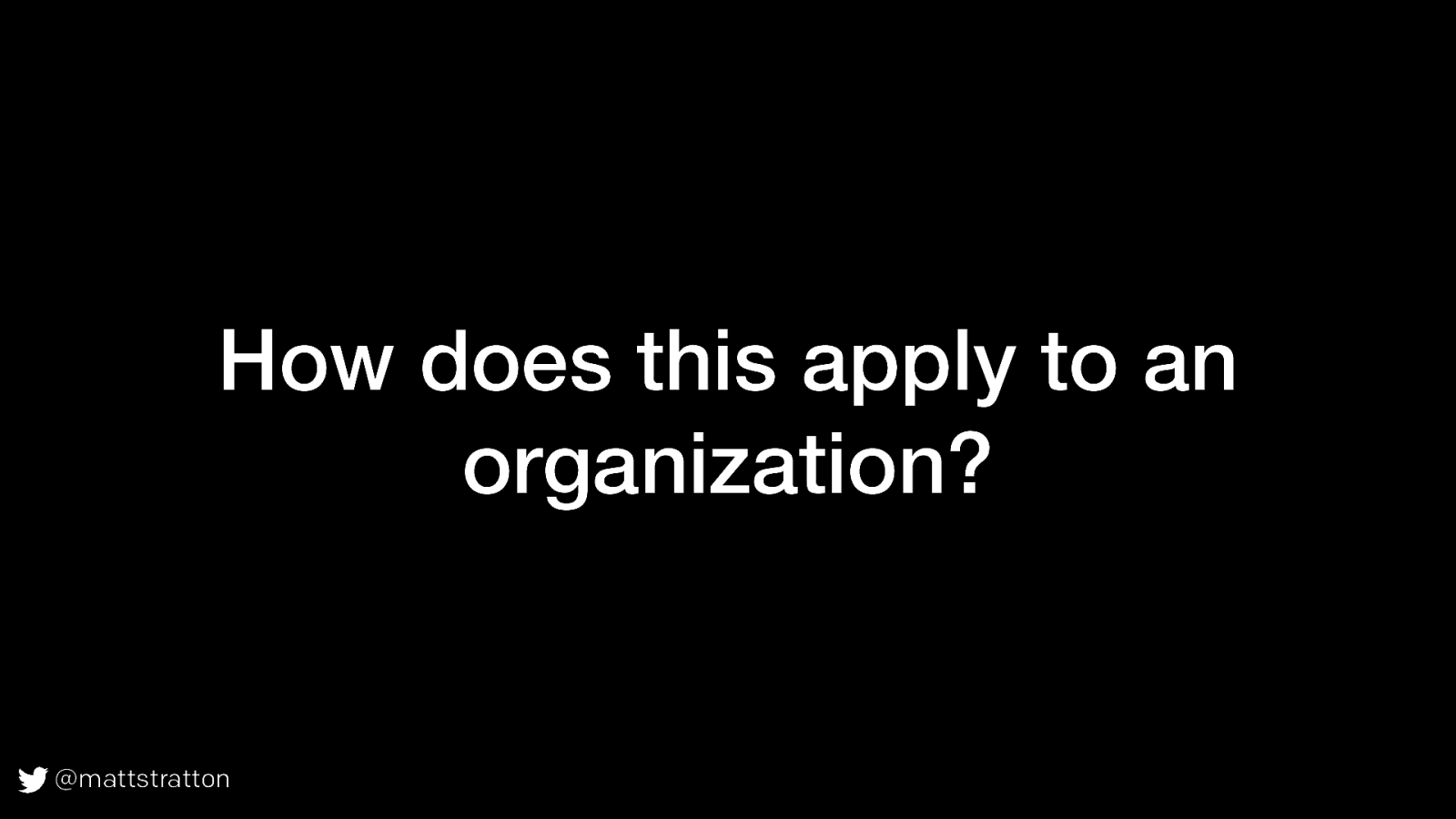
Slide 12
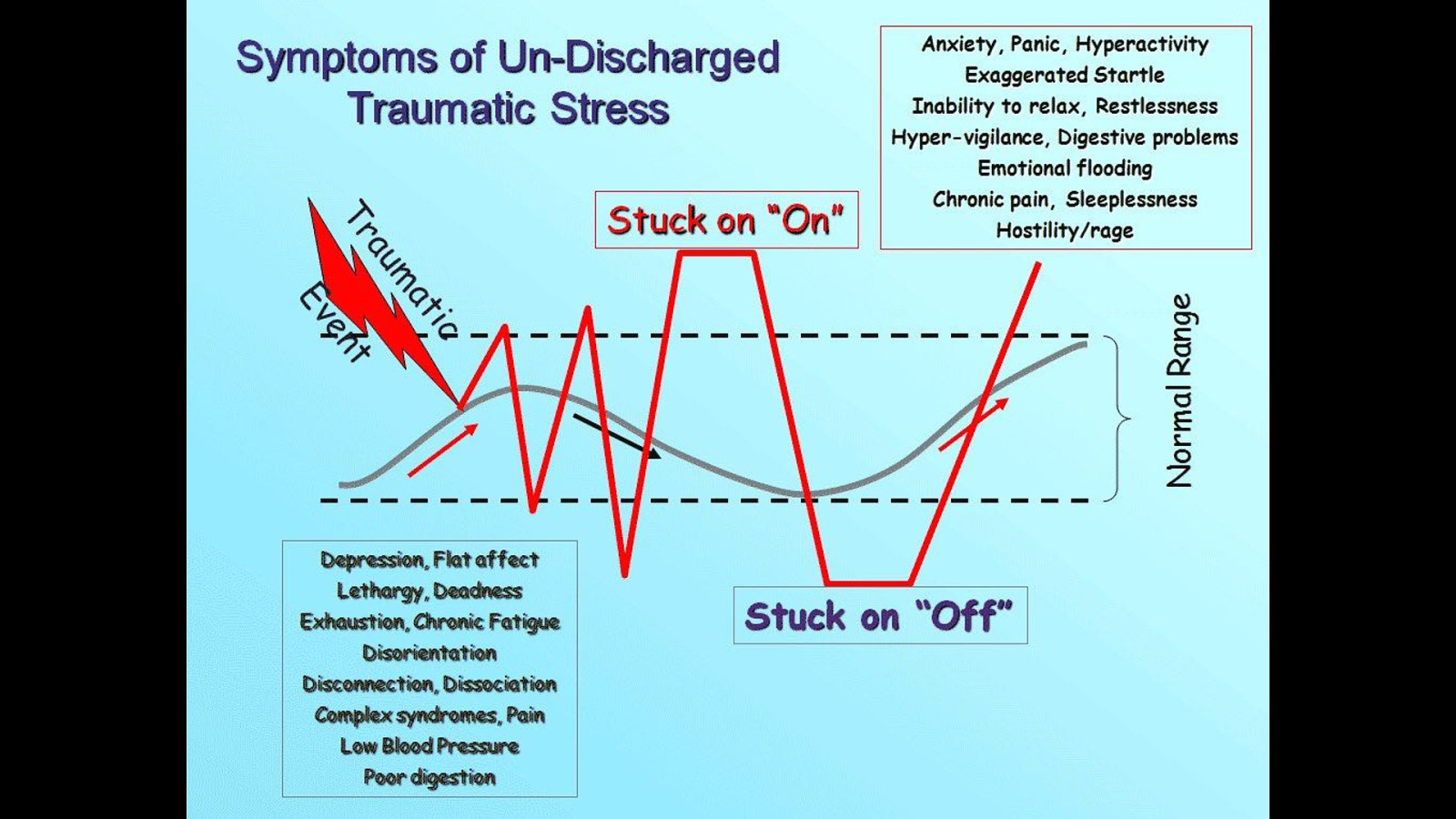
Let’s look at a deregulated nervous system again, and see how it might apply to an organization when a traumatic event occurs (an outage, etc)
Slide 13
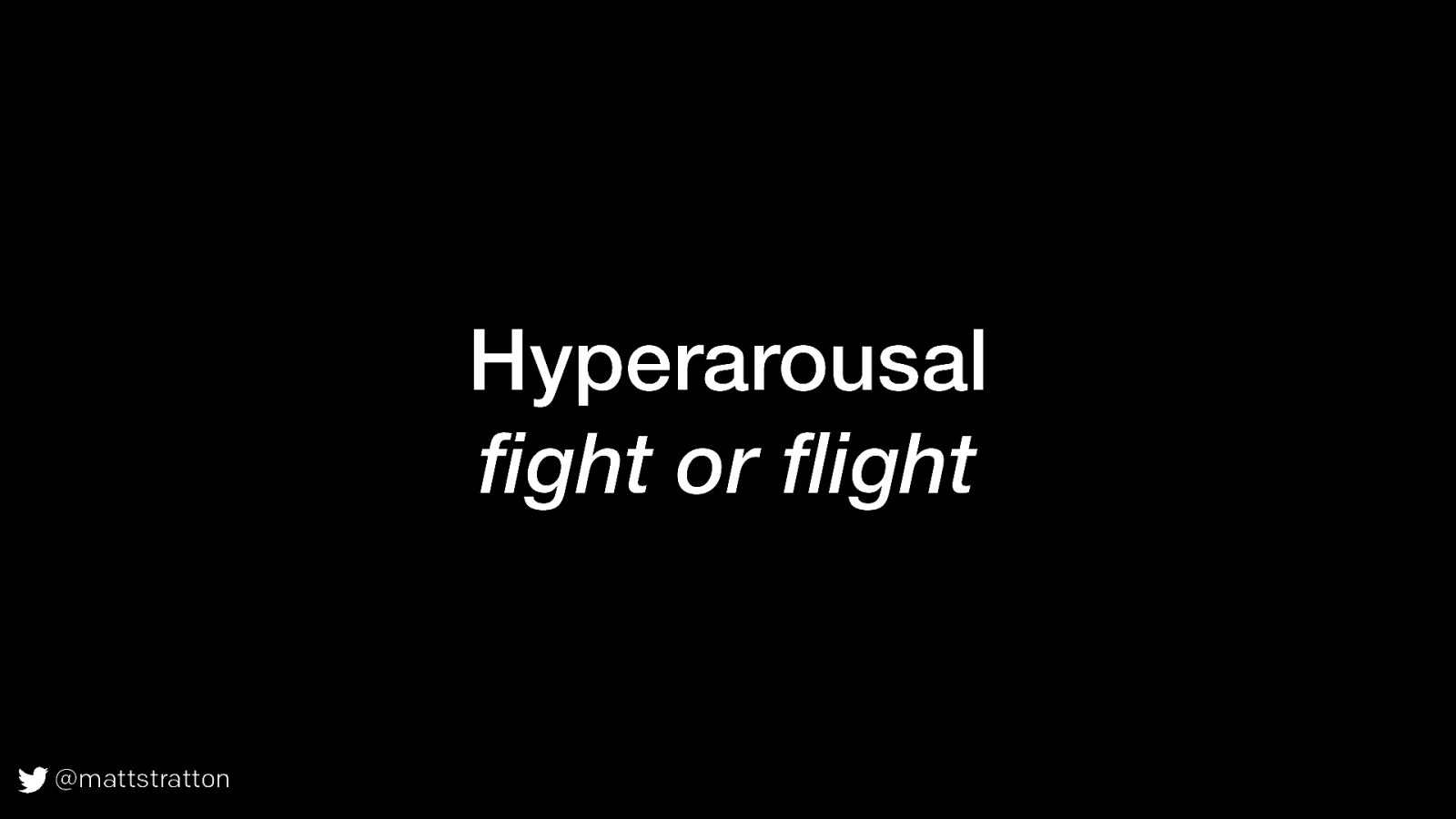
Hyperaroused organizations will display effects of “constant vigilance” and be hyper-aware of threats which take energy away from moving forward. They are “stuck on on”. Often times this is reflected in how leadership approaches outages and issues. Wartime metaphors, etc. Production support teams.
Slide 14
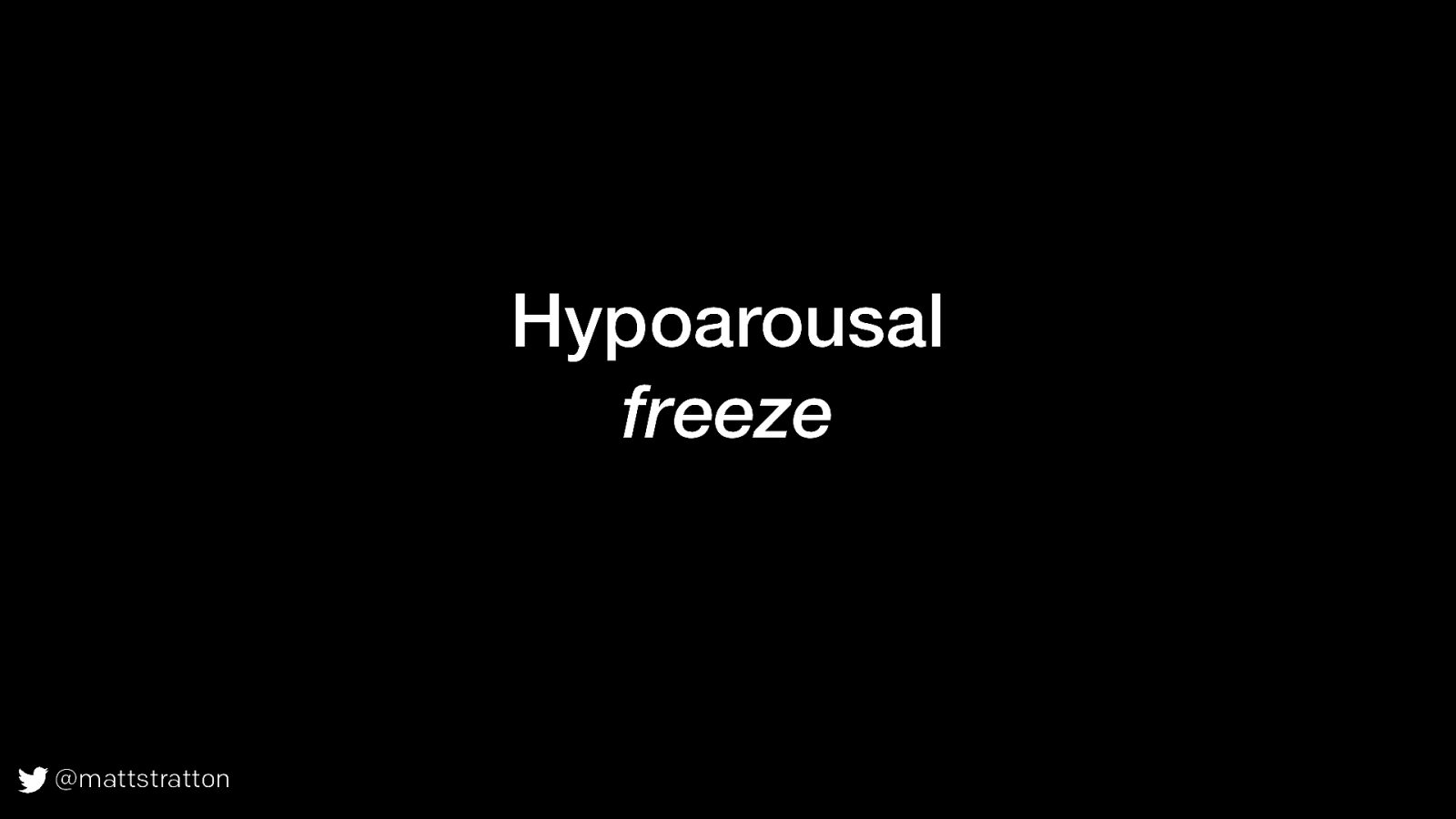
Hypoaroused organizations are unable to proceed or innovate. They are “stuck on off”
Slide 15
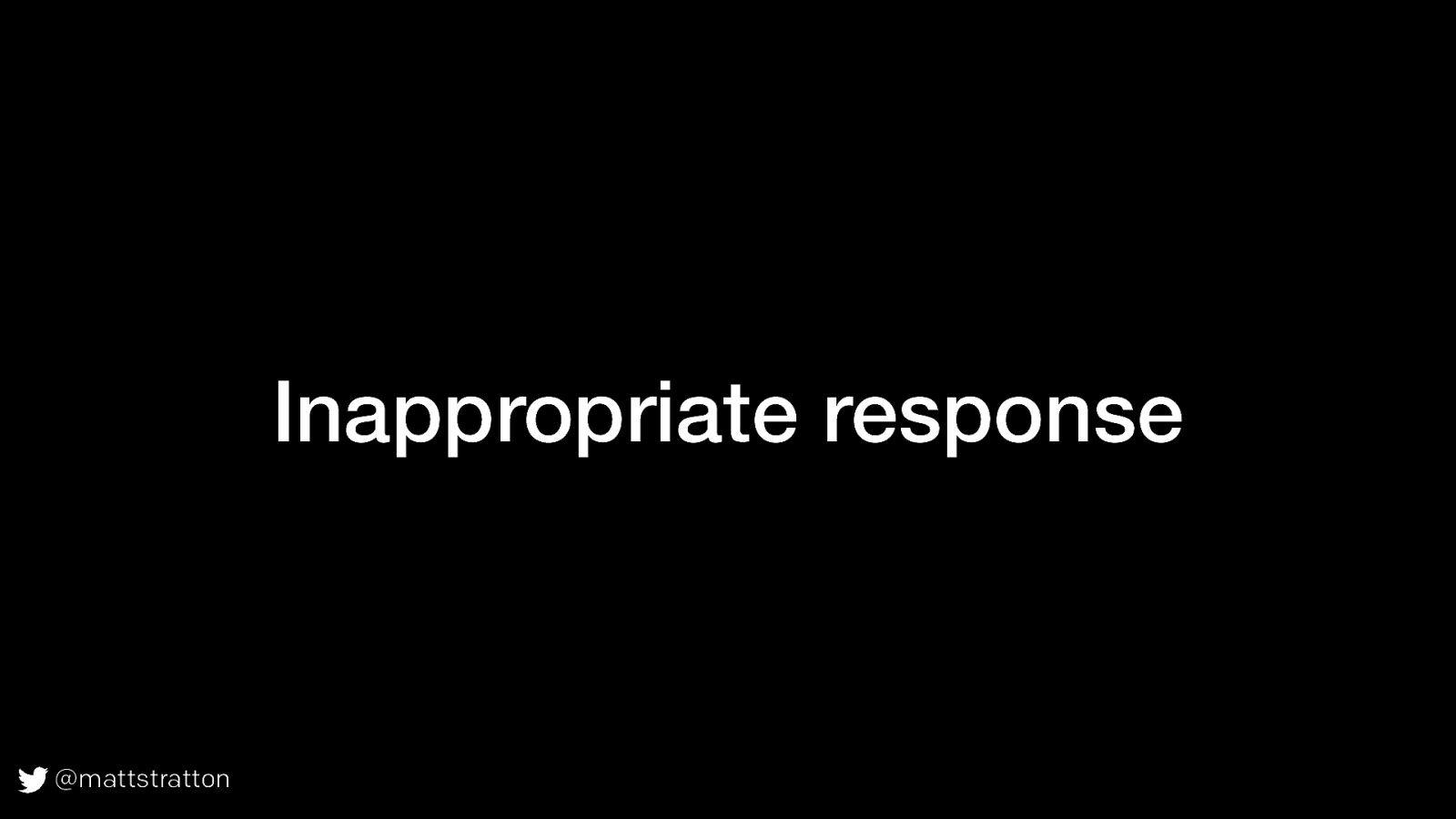
The signal may seem similar, but it’s not exactly the same. We look for pattern recognition because the signals seem the same as previous examples, but the complexity makes this inappropriate.
Slide 16
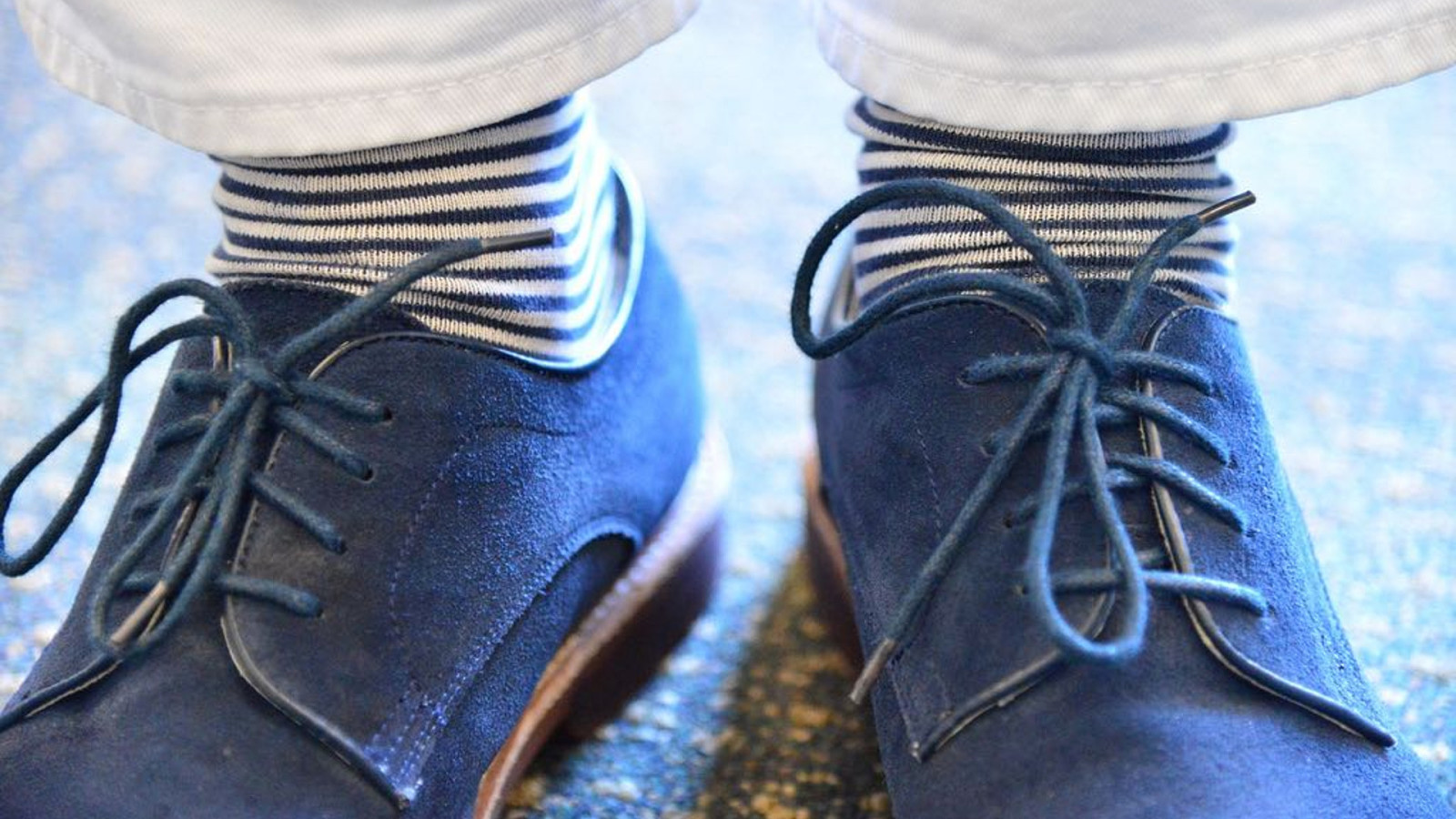
Consider removing shoes at the TSA. December 22, 2001.Richard Reid tries to ignite explosives hidden in his shoes on a flight from Paris to Miami. As a result, TSA begins randomly searching people’s shoes. In 2006, the TSA mandates that all passengers must remove their shoes going through security.
Slide 17
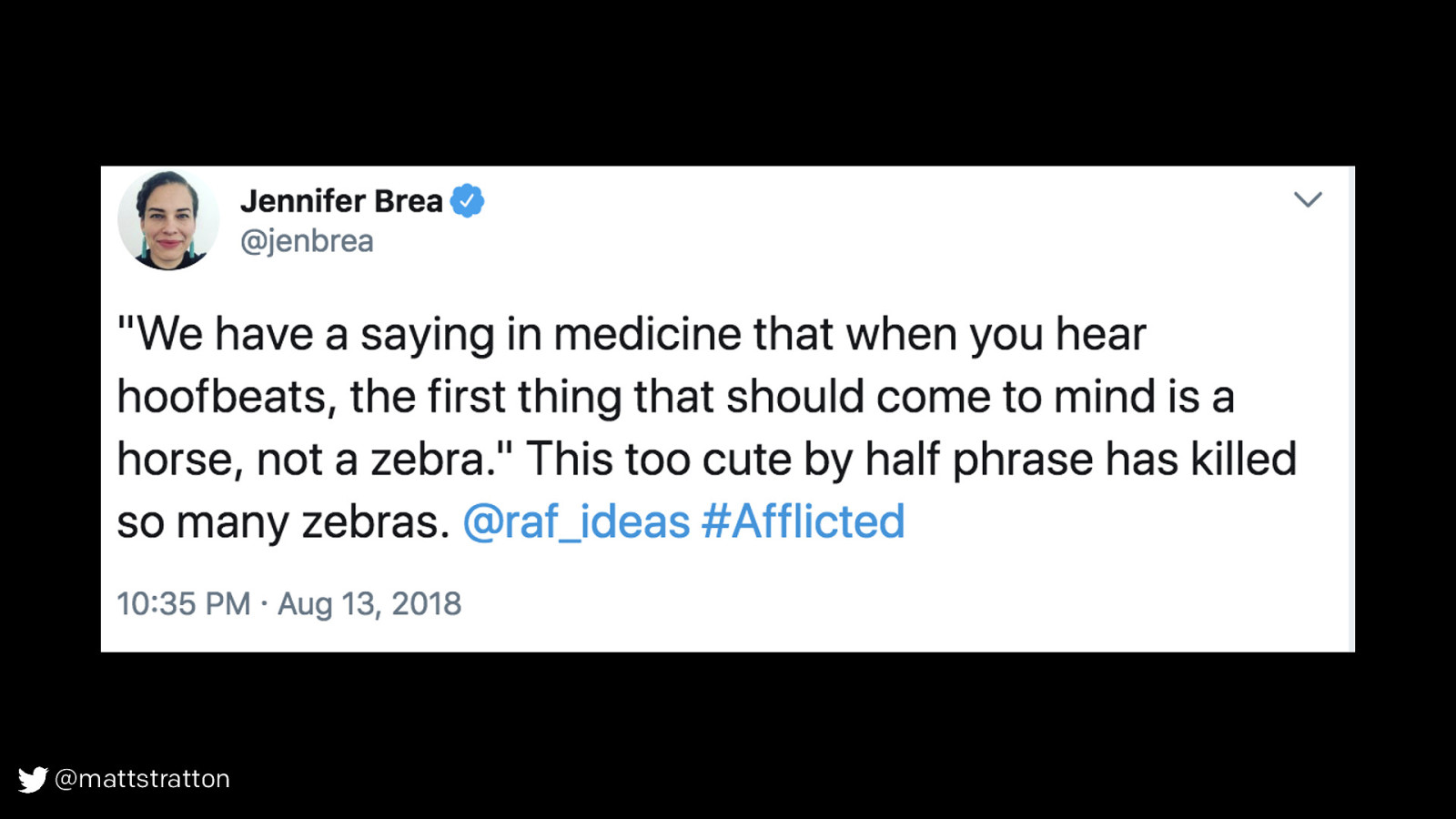
We need to learn to stop jumping on the first root cause. And look - more zebras.
Slide 18
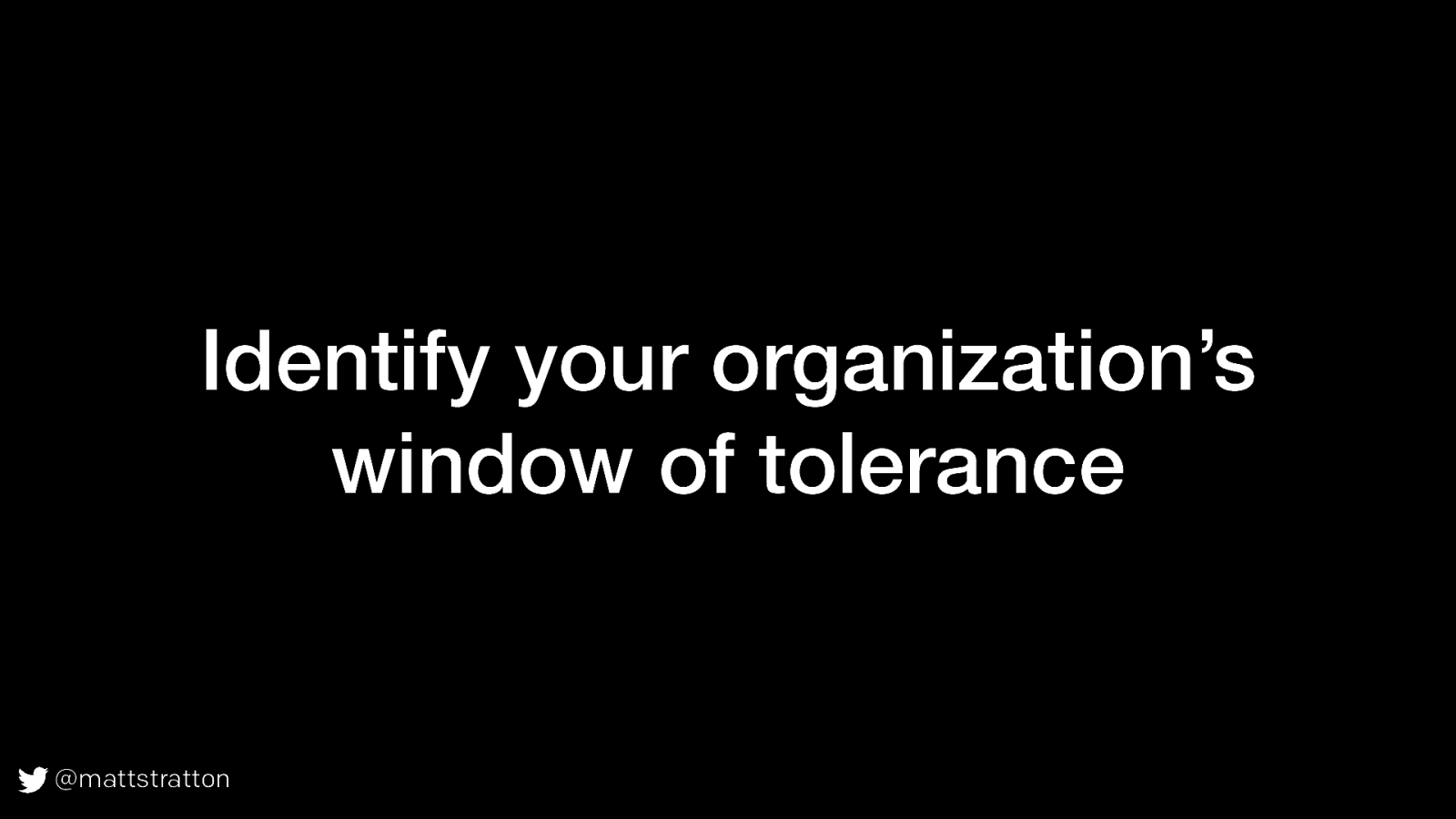
What can we do to understand our window of tolerance as an org? How can we identify when we are deregulated?
Slide 19
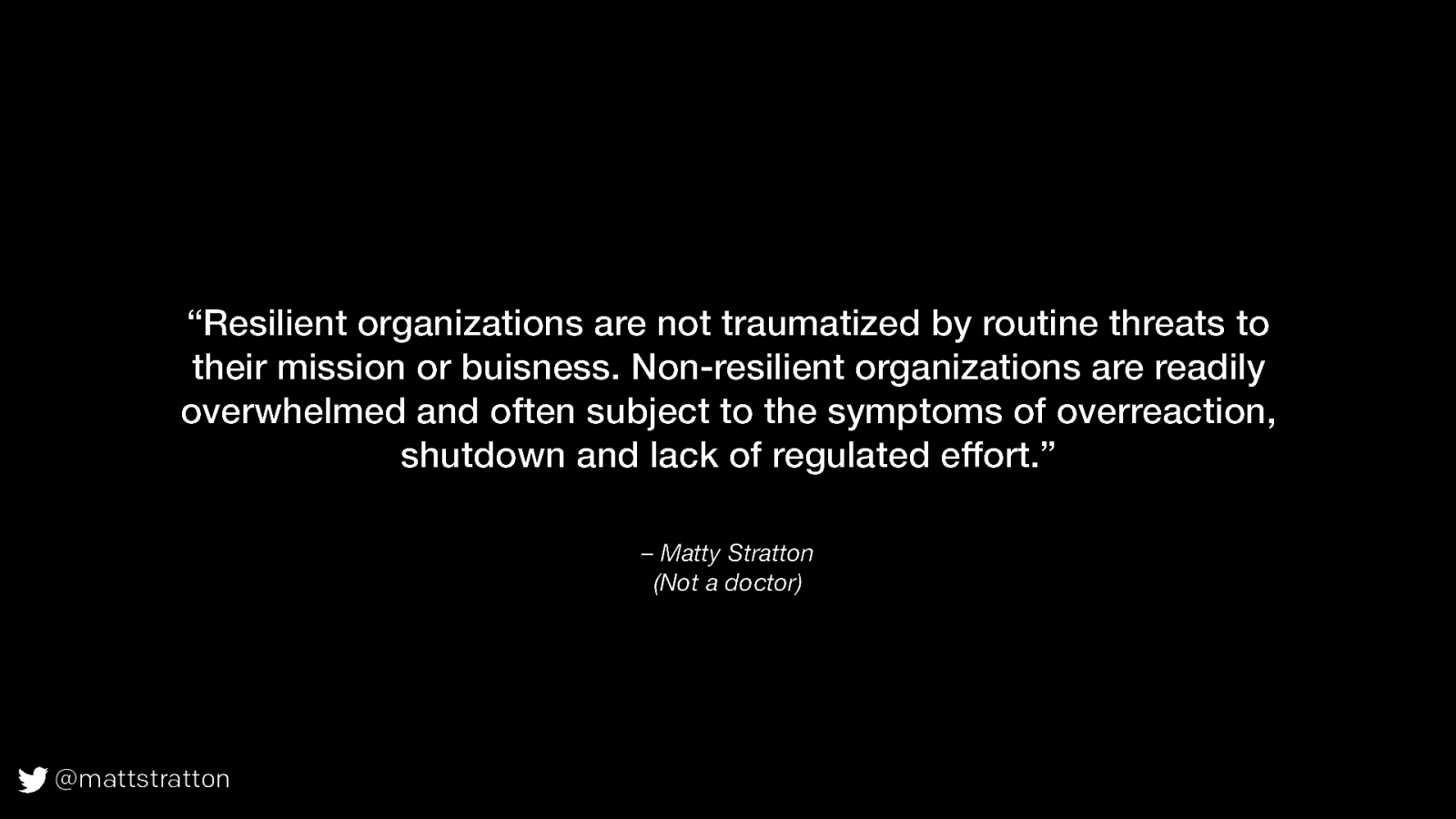
Slide 20
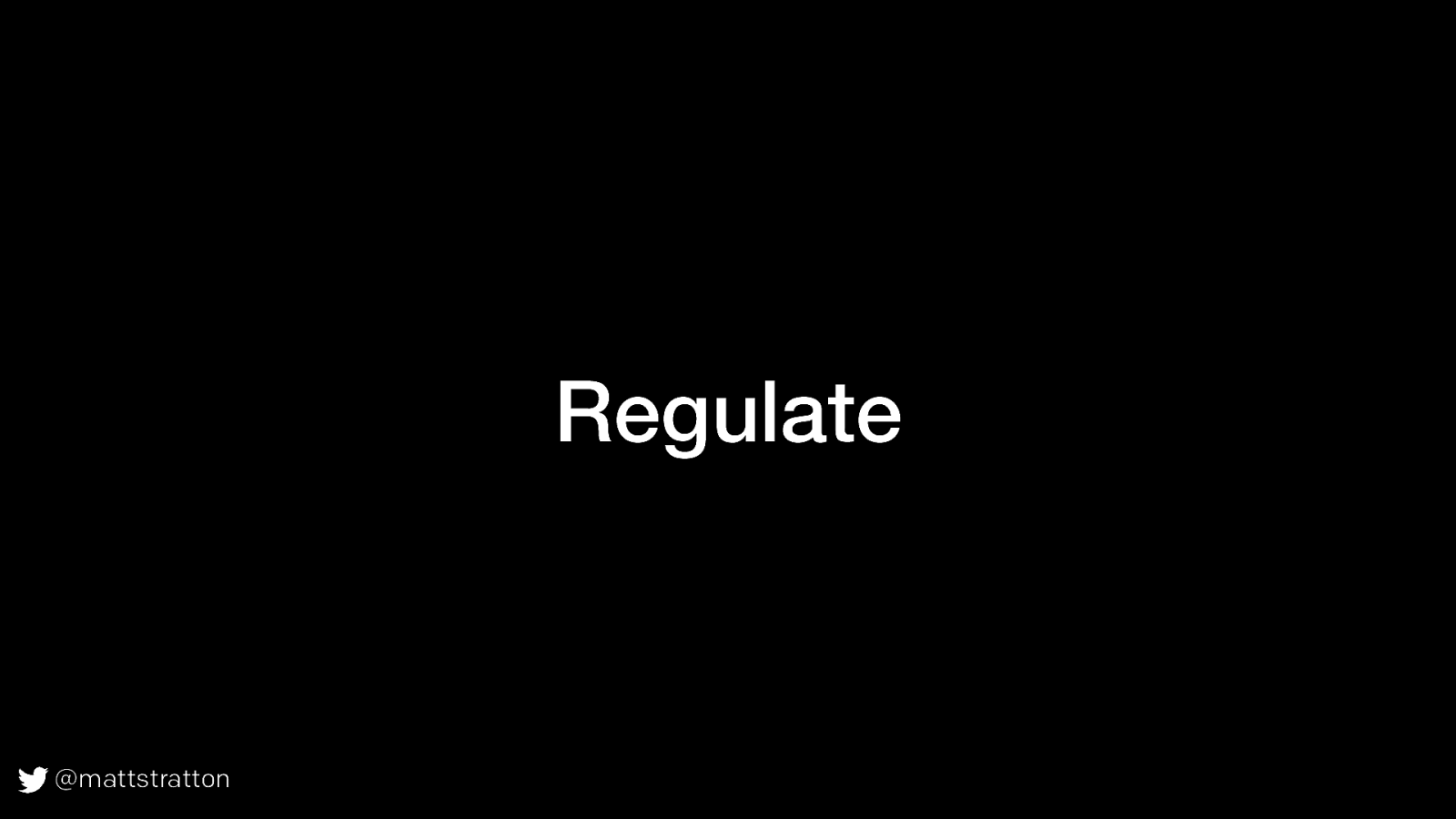
No, this is not a Warren G reference. How do humans and organizations take a deregulated state and become regulated?
Slide 21
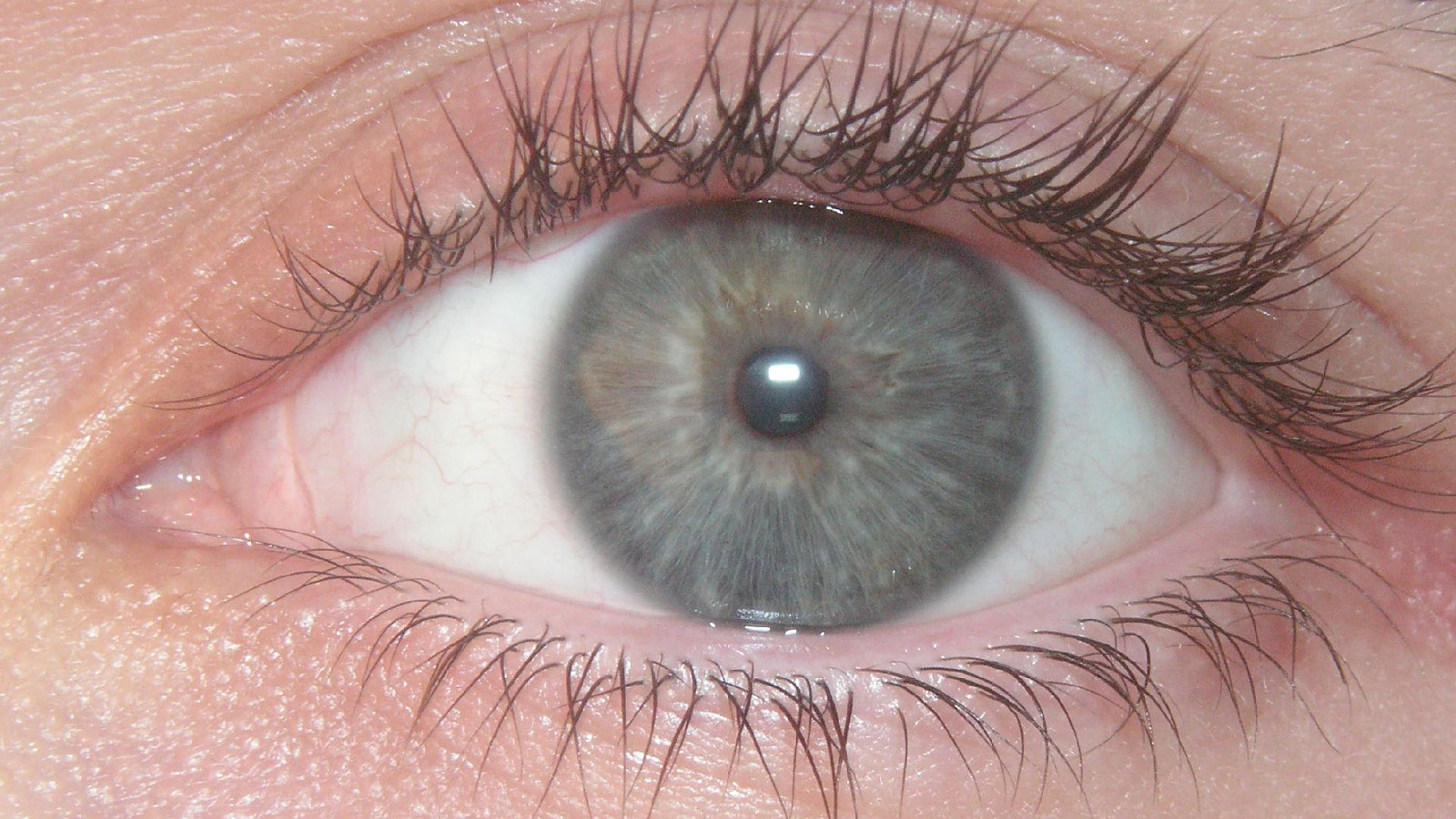
One of the treatments for post-traumatic stress is Eye Movement Desensitization and Reprocessing (EMDR), in which the patient’s difficult memories are offset with a positive association that is reinforced through external stimuli.
Slide 22
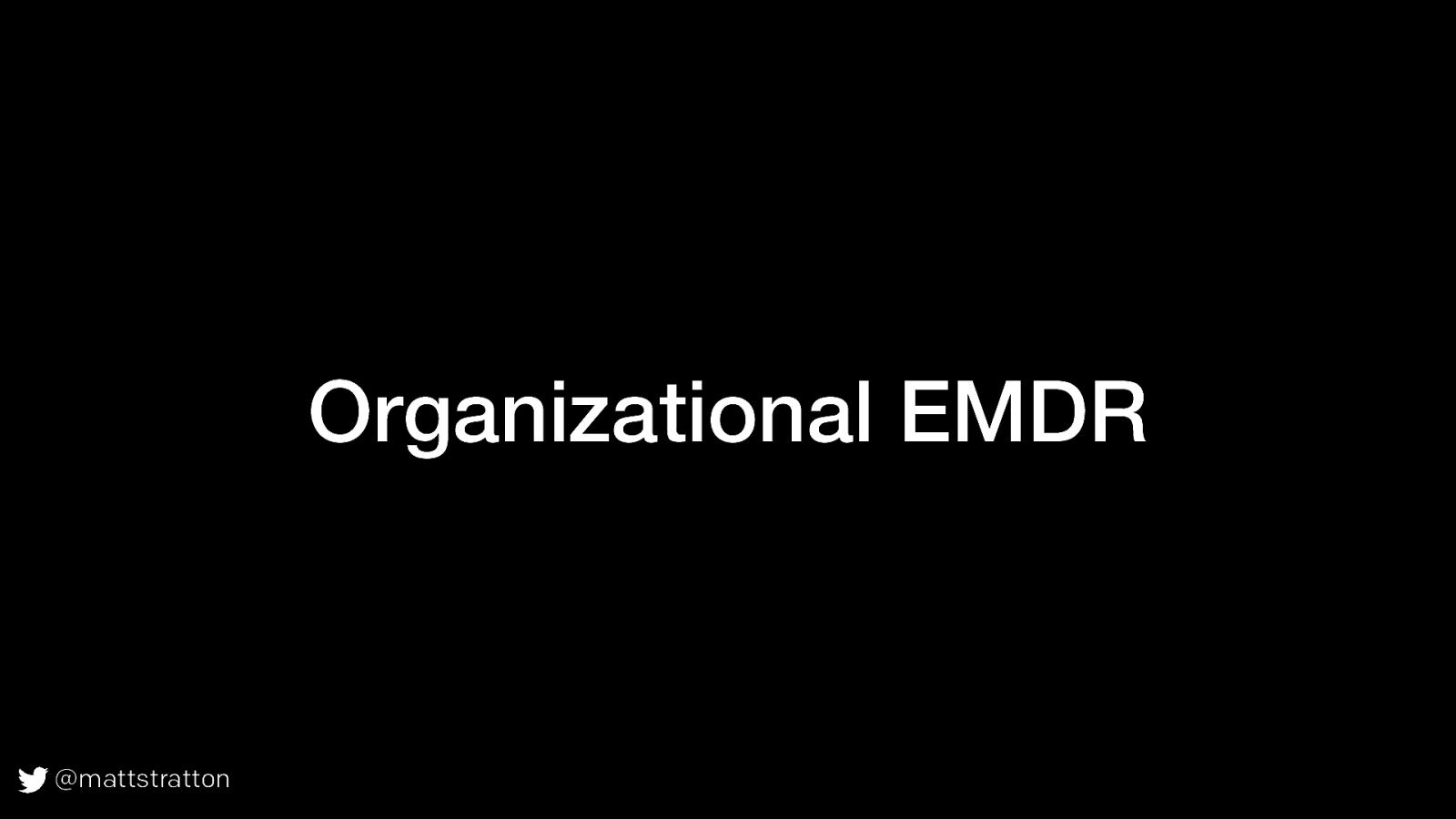
Obviously, we can’t do the exact same thing. But what are some things that we can do, to help achieve the same result?
Slide 23
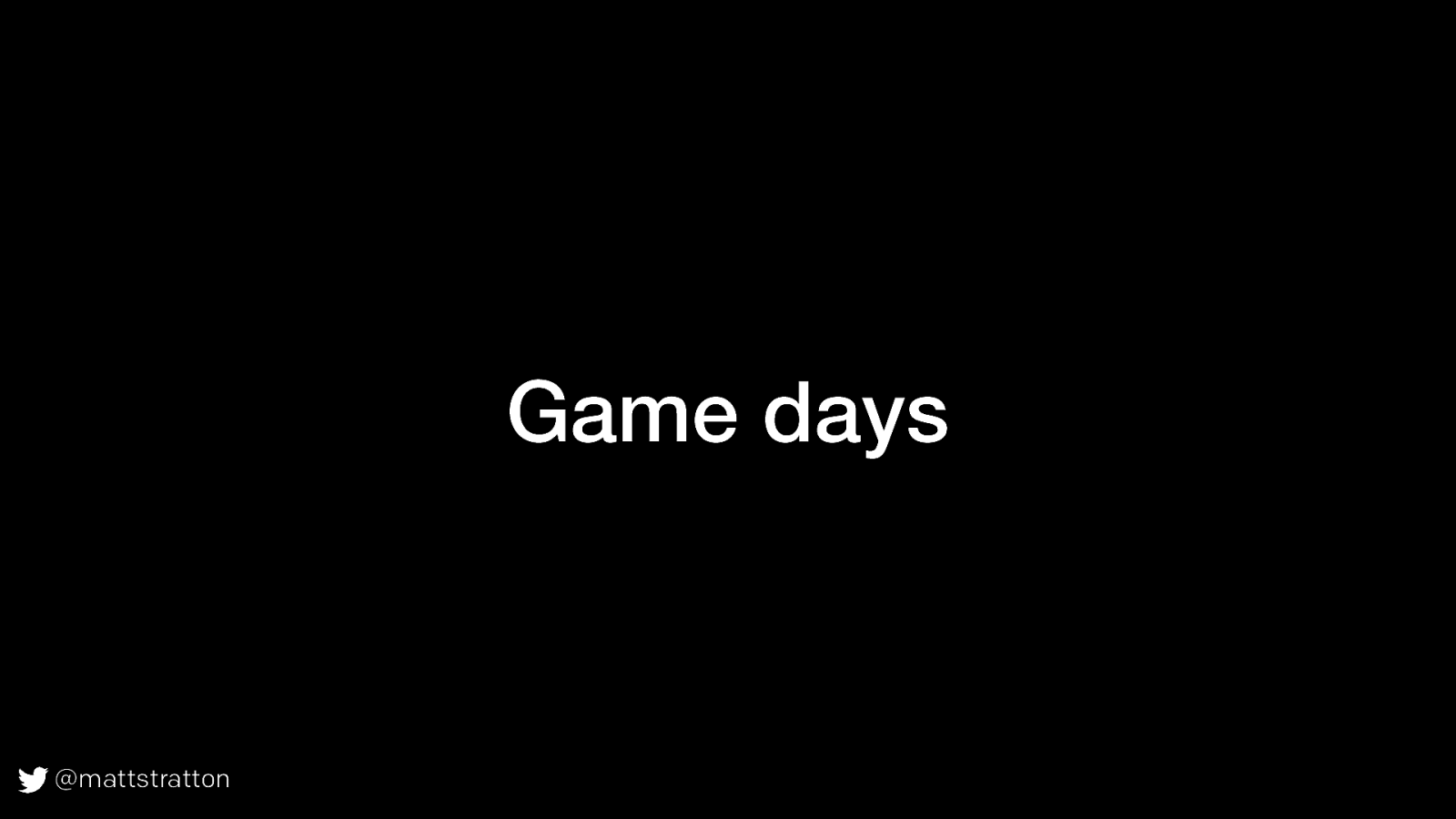
We want to make an association with outages and issues with a safe place. Game days can help do this, but they have to be done properly. Keep them low stress and safe - the point isn’t to practice under pressure, but to associate response with a safe environment.
Slide 24

When exploring in a game day, you need to have guidance. It’s like meditation. With some kinds of trauma, meditation is helpful. But the problem is when people go into their inner landscape and they're not prepared and they're not guided, sooner or later they encounter the trauma, and then what do they do? They could be overwhelmed with it, or they find a way to go away from the trauma. Similarly, if we don’t have plans in place for our game day, we are going to get wound around the axle. Also, in meditation for trauma, we can get what Levine calls “bliss bypass”. It's a way of avoiding the trauma - so if our game isn’t following our usual rules, we made it “too” safe.
Slide 25
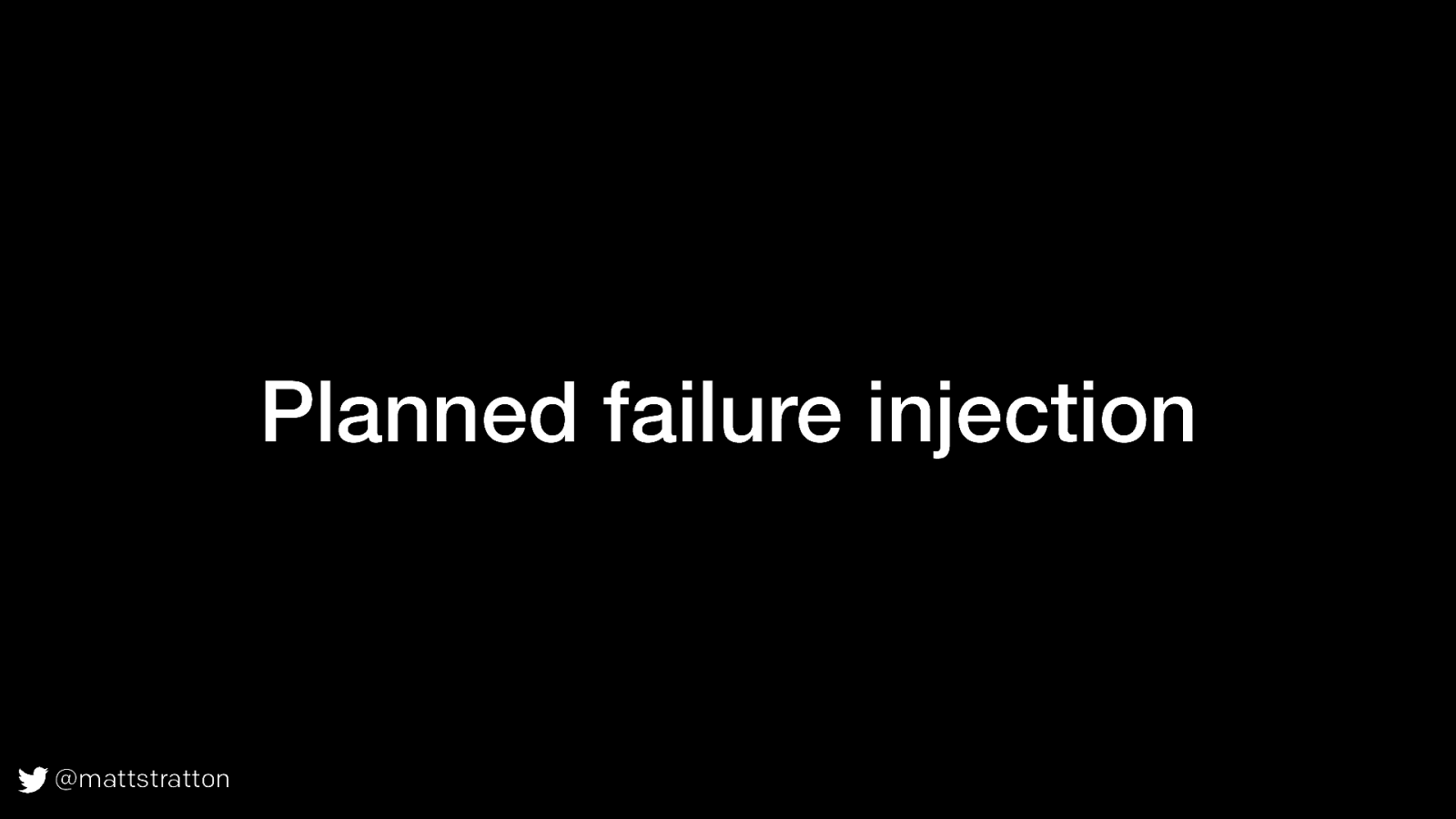
If you do planned failure injection in a gameday, run them like a real incident. Failure Fridays at Pagerduty for example. We follow full Incident Command processes. This causes an organizational association of a safe place for incidents.
Slide 26

This is also why you run all incidents at the initial severity. Even if you start them and realize they weren’t an incident, or a sev 1, or whatever, run them to their full course.
Slide 27
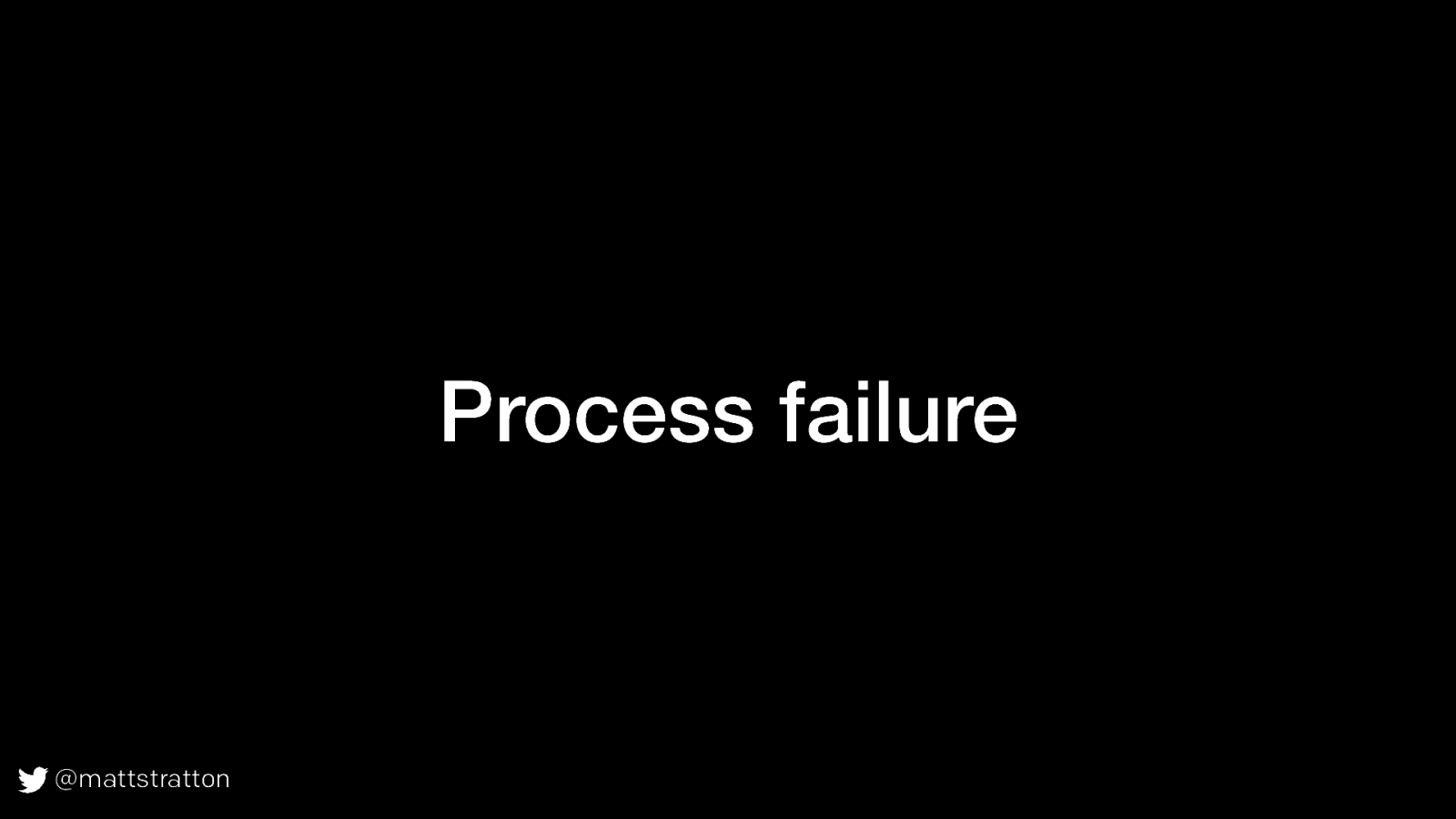
Blameless is just the beginning here. We need to process the failure/outage through all the information that we have, and the processing needs to have a conclusion. Otherwise it is unprocessed trauma. There is a misconception that to process trauma is to “get it all out”. We need to integrate our experiences into a coherent whole. This includes telling our stories as well as changing our autonomic nervous systems, which in the case of an organization has to do with how we respond to outages and incidents.
Slide 28

It’s essential to tell our stories. That’s how we process them. This happens for individuals but also for your larger organization.
Slide 29
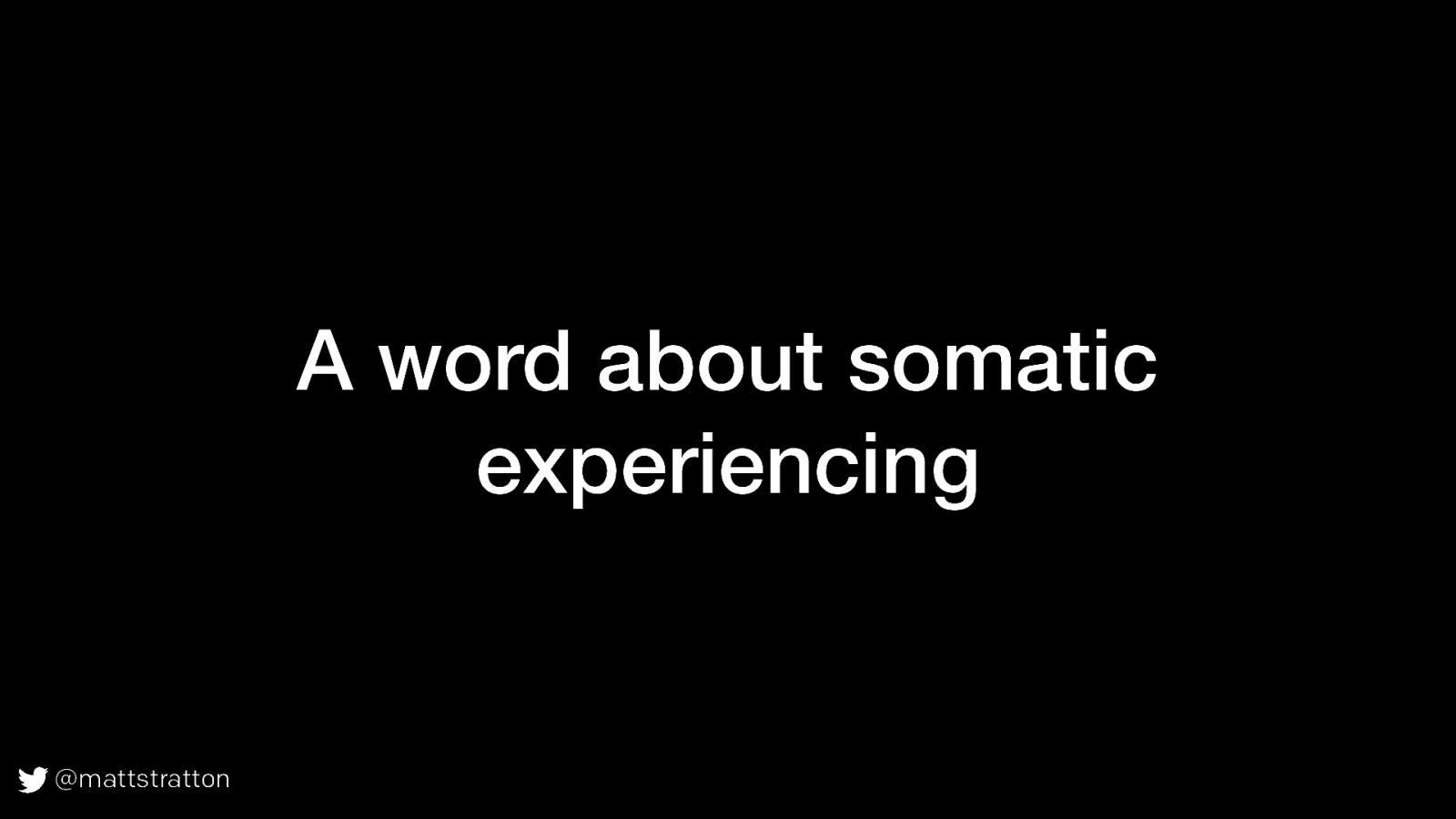
In top down therapy, it starts with the emotions. Why do you feel the way you do. This is very similar to looking for a root cause first. In somatic experiencing, the body is worked with first, to enable a titrated approach to the emotions. Similarly, during an incident you are working to restore service prior to determining cause. And it’s important to look at the whole system when processing it, not starting with the surface “emotions” which are the symptoms of the outage.
Slide 30
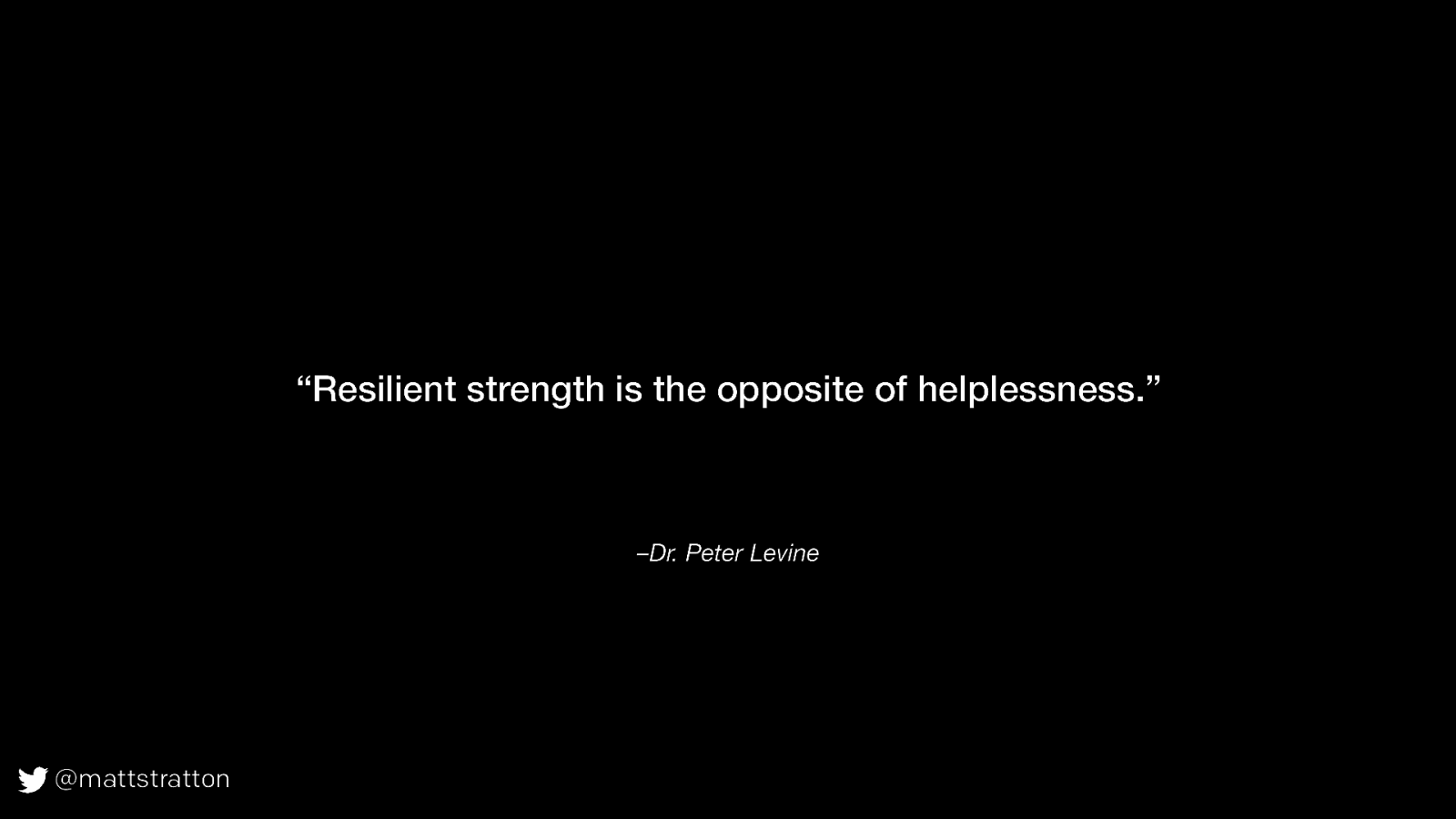
As Hannah mentioned yesterday in her talk, being resilient means that we don’t see things from the perspective of things that happen TO us. It is a matter of what can we do going forward. A culture of blame creates a culture of helplessness.